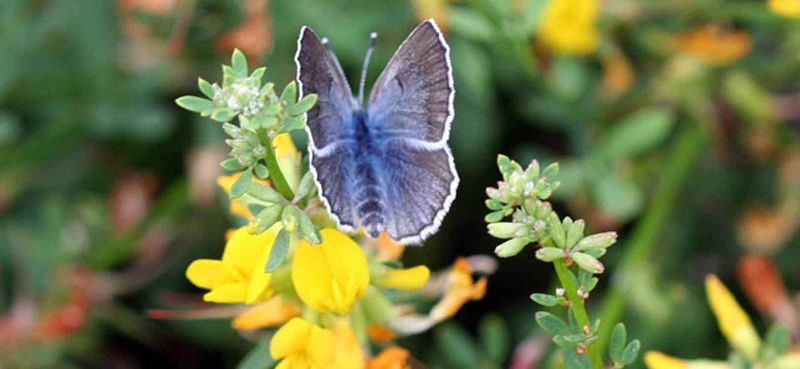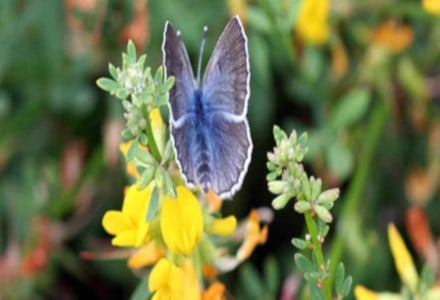
Palos Verdes blue Facts
- Without doubt, the most notable fact about the beautiful little butterfly named the Palos Verdes blue remains its status. That’s because, truly sadly, this small Lepidoptera now ranks as the third rarest butterfly on earth.
- This holds true despite ongoing efforts to preserve the species. In 2009, one such program came to fruition. At that time conservationists released several hundred specimens bred in captivity into the wild.
- As a result of this action, its known population reached nearly 5,000 individuals. Yet sadly, most of those subsequently perished in a regional drought. This situation took a terrible toll on the species.
- Due to these events, its known population currently numbers only about 200 individuals. However, despite this lamentable situation, the IUCN inexplicably does not list it on its Red List of Threatened Species.
- But, the U.S. Fish and Wildlife Service does list it as an Endangered Species, and rightfully so. Unfortunately, the few remaining specimens still face severe threats, including climate change and habitat destruction.
Related Articles
Palos Verdes blue Physical Description
Impressively, the lovely Palos Verdes blue remains a physically comparatively small variety of butterfly, regardless of its beauty. The amazing species also displays a variety of sexual dimorphism. In this species, like many others, the genders vary slightly in appearance.
Firstly, both sexes of this magnificent Lepidoptera display the light blue color on the wings. Secondly, however, the degree of difference begins at this point. That’s due to the fact that the dorsal wing of the male shows a bright silvery-blue, with a black outline.
Meanwhile, that of the female has a decidedly different appearance. In fact, this actually shows a somewhat stark seeming brownish-gray in color. Also, the overall wingspan possessed by both sexes averages only about 0.98 – 1.18 in (25 – 30 mm).
- Kingdom: Animalia
- Phylum: Arthropoda
- Class: Insecta
- Order: Lepidoptera
- Family: Lycaenidae
- Genus: Glaucopsyche
- Species: G. I. palosverdesensis
Palos Verdes blue Distribution, Habitat, and Ecology
Quite sadly, the precious Palos Verdes blue inhabits an extremely tiny range. This fact only serves to increase the danger of extinction. Presently, its only known population in the wild lives on the Palos Verdes Peninsula, in California, in the United States, in North America.
In addition to inhabiting an extremely limited area, the insect also has a highly limited habitat type. That’s due to the fact that it only appears in areas of coastal scrub. Researchers do not yet know if it ever existed in any other region.
The tiny but awesome little marvel of Nature also highly selective in what it will feed on. Due to this selectivity, it only consumes two plants, known commonly as locoweed and common deerweed. Sadly, both species are themselves rapidly disappearing.
Finally, the amazing Lepidoptera also faces stiff competition, and therefore threats to its survival, from other local species. These primarily consist of other, more numerous varieties of butterfly. It also falls prey to predation from populations of the western yellowjacket.
Species Sharing Its Range
Check out our other articles on 9 Bewildering African Plants, Phallostethus cuulong , Antarctica, Astounding Lizards of the World, Mandarin Duck, Coral Pink Sand Dune Beetle

